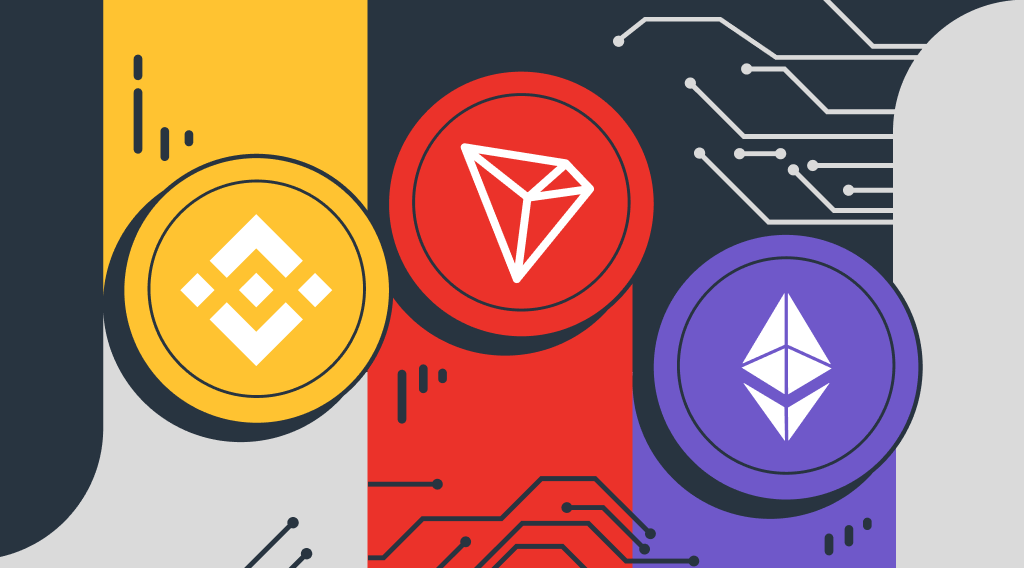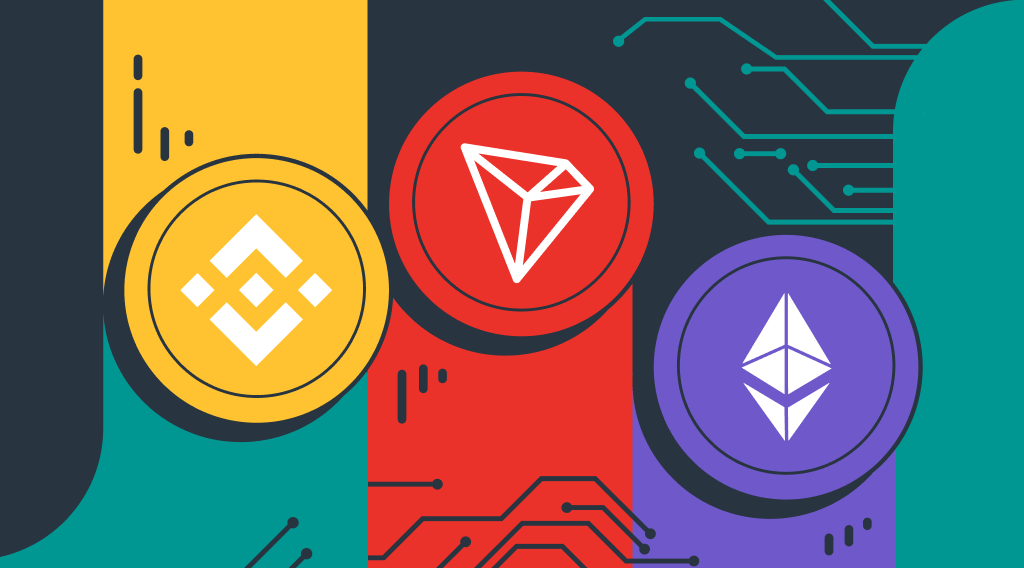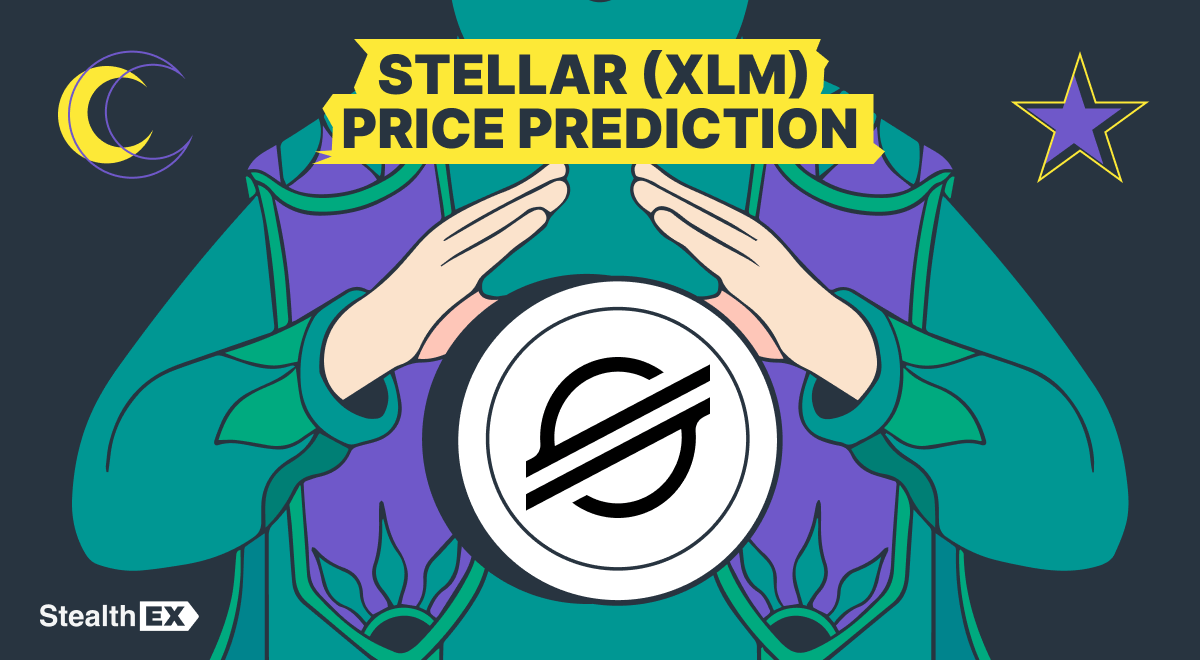What Are the Different Types of Blockchain Networks?

Blockchains are necessary to carry out transactions or exchange of information through a secure network. However, the way people use blockchain networks and distributed ledger technology or networks vary. For example, Bitcoin is more mainstream: it was introduced as a public network because people from all over the world can become a node, verify other nodes, and trade BTC.
While many networks remain public, institutions like banks would be more inclined to use a private blockchain network, a restricted system where only the authorized members of the bank can access confidential information. No one without special access to the blockchain can gain access to bank data.
Just like these examples, there are different ways in which the blockchain network is set up depending on the use and requirements.
Blockchain Networks: Overview
Every blockchain consists of a cluster of nodes functioning on a peer-to-peer (P2P) network system. Every node in a network has a copy of the shared ledger which gets updated timely. Each node can verify transactions, initiate or receive transactions and create blocks. These are the things different blockchains have in common and what essentially makes them alike. Now, let’s explore the differences between them.
There are four types of blockchain structures:
- Public
- Private
- Consortium
- Hybrid
Each of these blockchain types has its own features.
Public Blockchains
Public blockchains are permissionless in nature, allow anyone to join, and are completely decentralized. This type of blockchain allows all nodes of the blockchain to have equal rights to access the blockchain, create new blocks of data, and validate blocks of data.
Today, public blockchains are primarily used for exchanging and mining cryptocurrency. Popular public blockchains include Bitcoin, Ethereum, Litecoin, etc. On these public blockchains, the nodes ‘mine’ for cryptocurrency by creating blocks for the transactions requested on the network by solving cryptographic equations. In return for this hard work, the miner nodes earn a small amount of cryptocurrency. Mining can be done in blockchains, such as Monero, ZCash, Ravencoin, Haven Protocol, Ethereum Classic, etc.
Public Blockchain Characteristics
So, the characteristics of this type of blockchains are:
- Full transparency and access. Anyone can download and add nodes to the system. Every node has access to read and write on the ledger. A public blockchain allows you to see the ledger anytime you want.
- Decentralization. In this type of blockchain, there isn’t a centralized entity. Thus, the responsibility of maintaining the network is solely on the nodes. They are updating the ledger, and it promotes fairness with help from a consensus algorithm.
- Anonymous nature. Anonymity, which means no one can track your transactions back to you.
- Speed limit. It’s a bit slower compared to the private blockchain.
- No regulations. Public blockchain doesn’t have any regulations that the nodes have to follow. So, there is no limit to how one can use this platform.
- Immutable. When something is written on the blockchain, it can not be changed.
Private (Managed) Blockchains
Private blockchains, which may also be referred to as managed blockchains, are permissioned blockchains controlled by a single organization. As we mentioned earlier, a private network can be used by a large bank. The network will have limited and authorized nodes monitored by a network administrator. The information transmitted through such a private blockchain network stays within the network. Any new node that wishes to get added in a private network needs permission from the network admin. The bank gets to decide the scale of their private blockchain for all the branches of a city or all their branches in a country.
Private blockchains are only partially decentralized because public access to these blockchains is restricted. Some examples of private blockchains are the business-to-business virtual currency exchange network Ripple and Hyperledger, an umbrella project of open-source blockchain applications. Additionally, the examples of such private blockchains are R3 (banks), EWF (energy), B3i (insurance), Corda.
Private Blockchain Features
To sum it up, private blockchains have the following features:
- High efficiency and faster transactions. When you distribute the nodes locally, but also have much less nodes to participate in the ledger, the performance is faster.
- Better scalability. Being able to add nodes and services on demand can provide a great advantage to the enterprise.
- Restricted access. In this type of blockchain read and write is done upon invitation, hence it is a permissioned blockchain.
- Centralization. A private blockchain is more centralized.
Consortium Blockchains
Consortium blockchains are permissioned blockchains governed by a group of organizations, rather than one entity, as in the case of the private blockchain. They are essentially a subtype of blockchains.
Consortium blockchains enjoy more decentralization than private blockchains, resulting in higher levels of security. However, setting up consortiums can be a difficult process as it requires cooperation between a number of organizations, which presents logistical challenges. Furthermore, some members of supply chains may not have the needed technology or the infrastructure to implement blockchain tools, and those that do may decide the upfront costs are too steep a price to pay to digitize their data.
A popular set of consortium blockchain solutions for the financial services industry and beyond has been developed by the enterprise software firm R3. In the supply chain sector, CargoSmart has developed the Global Shipping Business Network Consortium, a not-for-profit blockchain consortium which aims to digitalize the shipping industry and allow maritime industry operators to work more collaboratively.
Consortium Blockchain Characteristics
The characteristics of consortium blockchains are:
- Fully controlled by one entity. The consortium blockchain is completely controlled by a single party, but it is immune to monopoly. This control allows each member to define their own rules, revise or cancel erroneous transactions, modify balances, and take other measures to foster beneficial cooperation for firms with a common goal provided all members agree.
- Fewer hacks and better security. Validation is carried out by known and recognized members of a small network of nodes, removing the threat of a 51 percent assault. Rule breakers are easily detected and lose more than they gain from their dishonesty.
- Better privacy. Since the information from authenticated blocks is not disclosed to the public, but is admissible to consortium members, the consortium has a higher level of privacy. Clients of the platform gain a higher level of trust and confidence as a result.
Hybrid Blockchains
Hybrid blockchains are blockchains that are controlled by a single organization, but with a level of oversight performed by the public blockchain, which is required to perform certain transaction validations. An example of a hybrid blockchain is IBM Food Trust, which was developed to improve efficiency throughout the whole food supply chain.
Hybrid Blockchain Features
This type of crypto blockchains offers the following features:
- Closed ecosystem. The number one advantage of hybrid blockchain is its ability to work in a closed ecosystem. That means that companies or organizations don’t have to worry about getting their information leaked.
- The rules can be changed when needed. Hybrid blockchains are more flexible, yet the nature of the change depends on the purpose of the hybrid blockchain.
- Security. Hybrid blockchains are immune to a 51% attack as hackers cannot have access to the network to carry out the attack.
- Private, yet accessible. Many companies may want to keep the privacy but also need to configure their blockchain so that they can communicate with all their shareholders, including the public.
- Low transaction cost. Another added benefit of using hybrid blockchain is to have a low transaction cost. The transaction fees can reduce to even 0.01$ per transaction.

Different Blockchain Platforms and Tokens
In addition to crypto blockchains types, the systems differ by tokens available on them. Ranging from web3 tokens, ICO tokens, ERC20-tokens, and DeFi tokens to stablecoins – the crypto space has to offer a large variety of different tokens.
What Is ERC 20 Token?
One significant difference between ERC20 tokens and all the other token types is that ERC 20 tokens are created on top of the Ethereum blockchain. Truth be told, ERC 20 is not even a token but more of a token standard. Let’s imagine a company decides to launch a dApp on the Ethereum platform. For their token to work, they need to produce it in agreement with the ERC20 standard that defines a set of rules.
The tokens below can all be considered ERC20 as long as they are launched on the Ethereum platform. Some tokens can be in more than one category, and additional token types are:
- Platform tokens. These support dApps built on the blockchain.
- Security tokens. This type of tokens represent legal ownership of a physical or digital asset.
- Transactional tokens. Transactional tokens serve as units of account and are exchanged for goods and services.
- Utility tokens. These are integrated into an existing protocol and used to access the services of that protocol.
- Governance tokens. Governance tokens fuel blockchain-based voting systems.
TRC20 Token
The TRC-20 token standard allows for tokens to be created on the TRON network. It defines the functions that need to be implemented so that a token can be accepted as a standard TRC20 token. The TRC-20 standard is similar to the ERC-20 standard used for Ethereum tokens and is intended to be fully compatible with it.
For the TRC-20 protocol to work correctly, the token’s contract is required to implement several functions. There are three optional items and six required items that need to be defined in TRC-20 token development.
BEP2 VS BEP20
BEP2 and BEP20 both belong to Binance, the largest crypto exchange. They are token standards for different blockchains. BEP2 is a Binance Chain token standard, whereas BEP20 is a Binance Smart Chain token. BEP-20 is a token standard, similar to Ethereum’s well-known, smart contract-compatible specific protocol ERC-20. The token standard ensures that the token has fundamental capabilities, such as transferring, returning a balance, and examining token ownership. In addition, the BEP-20 coin has also been discovered to be interoperable with the ERC-20 and BEP-2 tokens.
Where to Buy BEP 20 and BEP2 Tokens?
StealthEX is here to help you buy tokens like BEP20 and BEP2. The exchange specifies exactly what type of token you’re about to exchange. You can swap tokens privately and without the need to sign up for the service. Our crypto collection has more than 600 different coins and you can do wallet-to-wallet transfers instantly and problem-free.
Just go to StealthEX and follow these easy steps:
- Choose the pair and the amount you want to exchange.
- Press the “Start exchange” button.
- Provide the recipient address to transfer your crypto to.
- Process the transaction.
- Receive your crypto coins.
Follow us on Medium, Twitter, Telegram, YouTube, and Reddit to stay updated about the latest news on StealthEX.io and the rest of the crypto world.
Don’t forget to do your own research before buying any crypto. The views and opinions expressed in this article are solely those of the author.
blockchain blockchain network crypto world Ethereum Ethereum blockchainRecent Articles on Cryptocurrency
 Pudgy Penguins Price Prediction: Is PENGU Coin a Good Investment?
Pudgy Penguins Price Prediction: Is PENGU Coin a Good Investment?  XLM Price Prediction: Can Stellar Lumens Reach $10?
XLM Price Prediction: Can Stellar Lumens Reach $10? 
